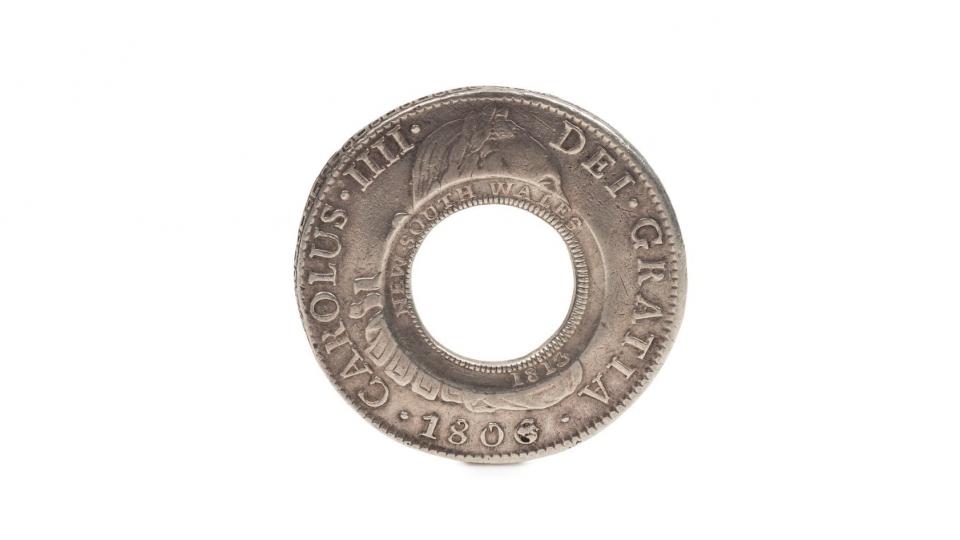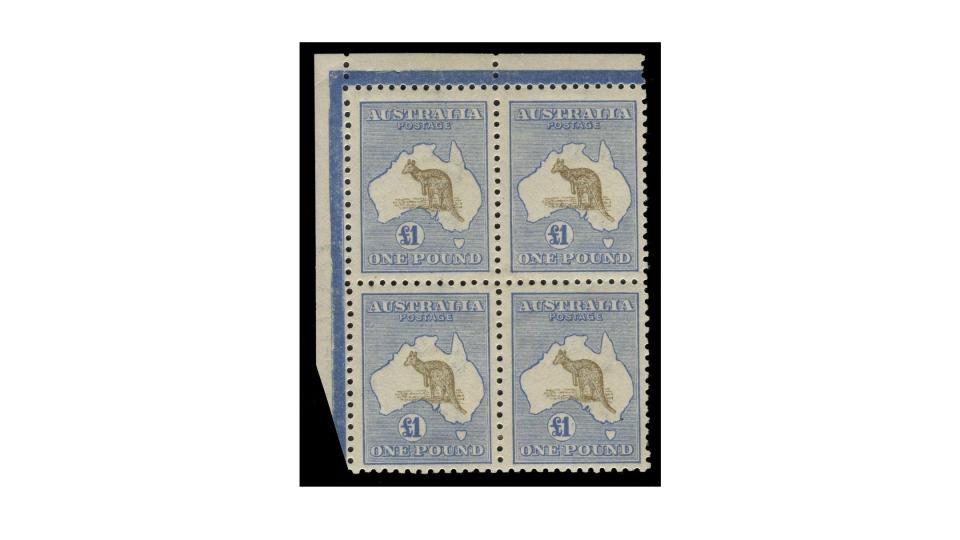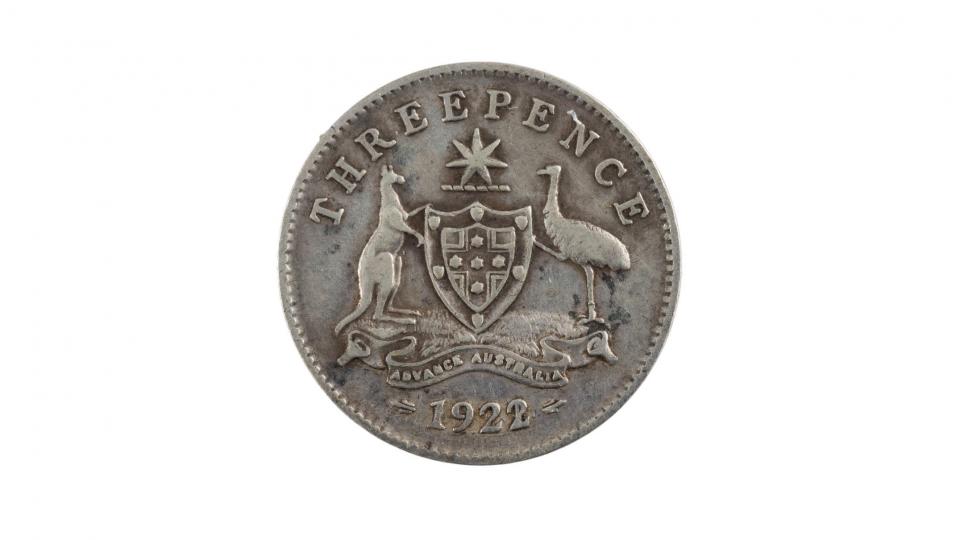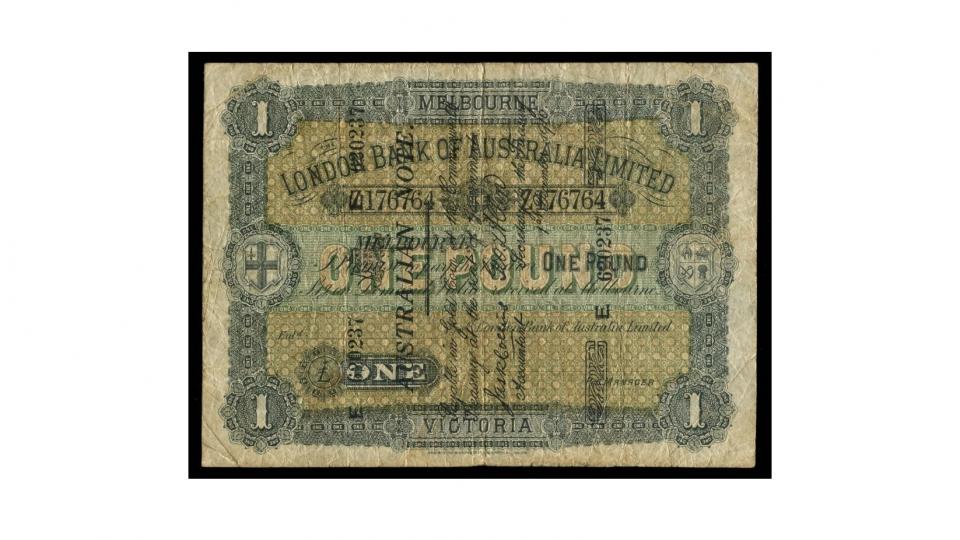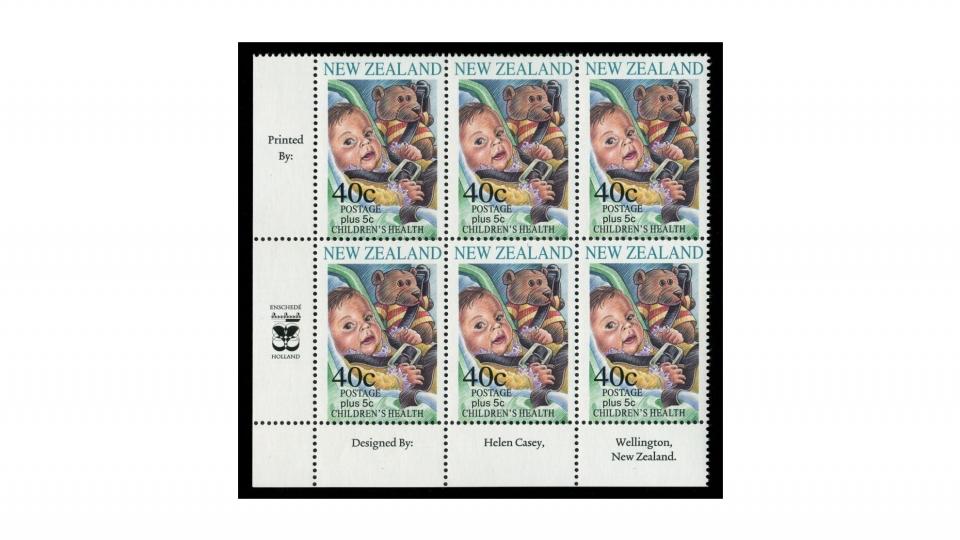Submitted by aarAdmin on Fri, 02/17/2023 - 00:00
A rare 1813 holey dollar (lot 60) met all expectations when it sold for $145,000 at Melbourne-based Leski Auctions coins, banknotes and stamps auction on February 16.
Struck on a Spanish Charles III 1806 eight reales from Mexico City the sale price was at the higher end of the catalogue estimate.
Introduced by Governor Lachlan Macquarie in 1813 and Australia’s first coins, holey dollars were used in New South Wales during the early days of penal settlement.
With no access to metal from which to make blanks, Governor Macquarie acquired 40,000 Spanish reales of eight and ordered the centre be cut from each one to make two coins.
The outside, or holed dollar, was over stamped with the date 1813 and given a value of five shillings, and the inside, known as a dump, awarded 15 pence.
The second top selling item was a block of four kangaroo stamps (lot 486) which went under the hammer for $11,000, slightly below its $12,000-$15,000 catalogue estimate, followed at $8000 by lot 428 – a 1993 Fraser/Evans uncirculated and very rare specimen polymer $10 note.
An overdated George V 1922/1 threepence (lot 178) brought $7000 while a 1910 superscribed one-pound Collins/Allen banknote (lot 411) shared the same price of $4600 as eight Australian gold sovereigns in the same lot (165) and a King George V head one penny Perkins Bacon die proof stamp (lot 498).
Lot 770 featured six 1996 New Zealand 40 cent stamps road safety error issue (with a baby in the restraint and teddy bear in the seat belt), bringing $4000 on a single bid, while a King George V Australian five-pound banknote (lot 409) sold for $3800.
In a rare auction moment, eight star banknotes (issued when the original note is damaged and withdrawn from service) covering lots 433-440 all sold within or above estimates.
According to auctioneer Charles Leski, it is almost unheard of to have so many star notes in one auction, given that an auction sighting of one a year is most unusual.
Thirteen hundred dollars for lot 678 also was a good result. Contained within the postal history section, the lot featured an August 1854 letter complete with its original envelope from Victorian policeman James Dixon to a friend in England describing conditions in the new colony.
